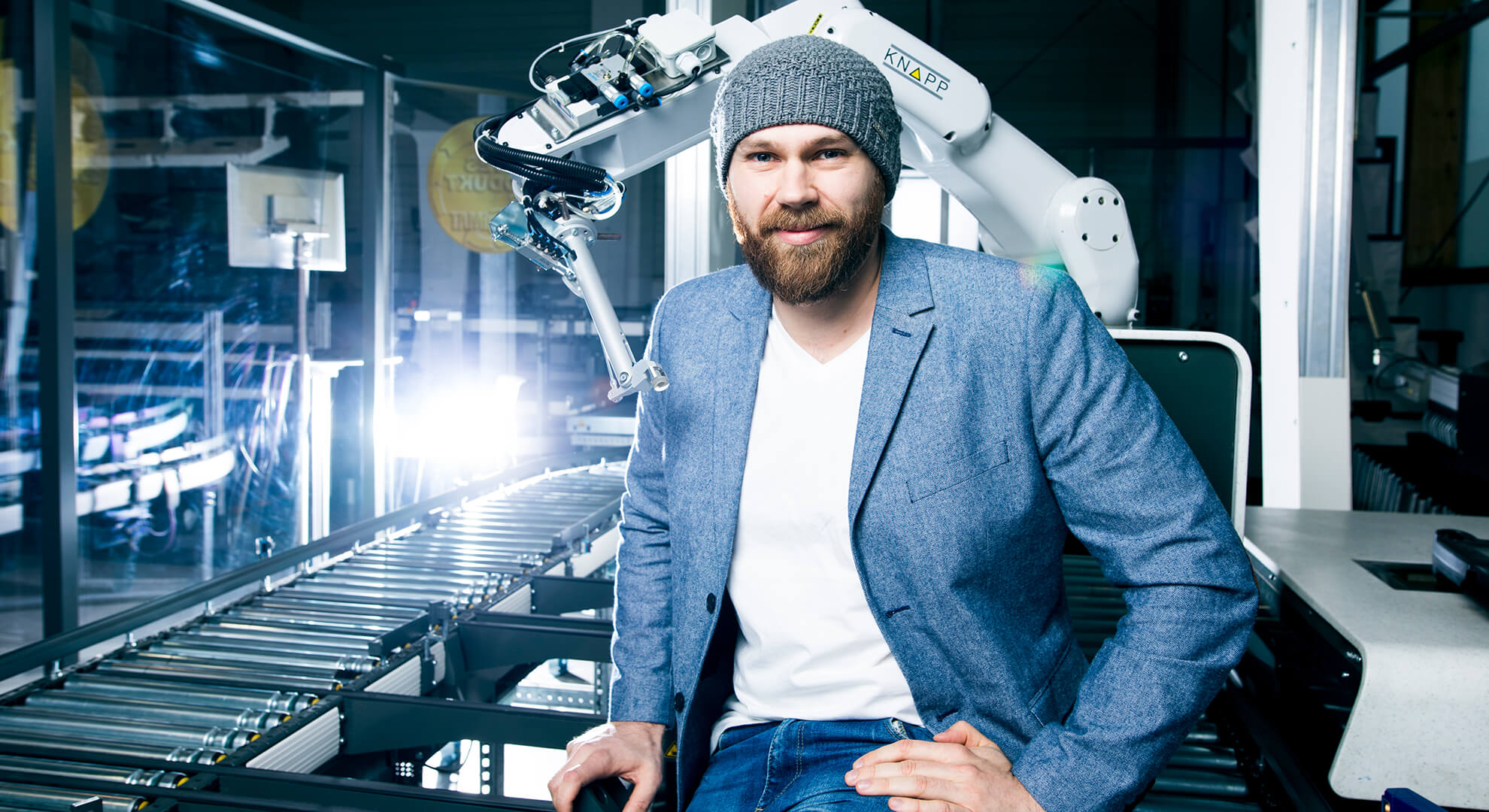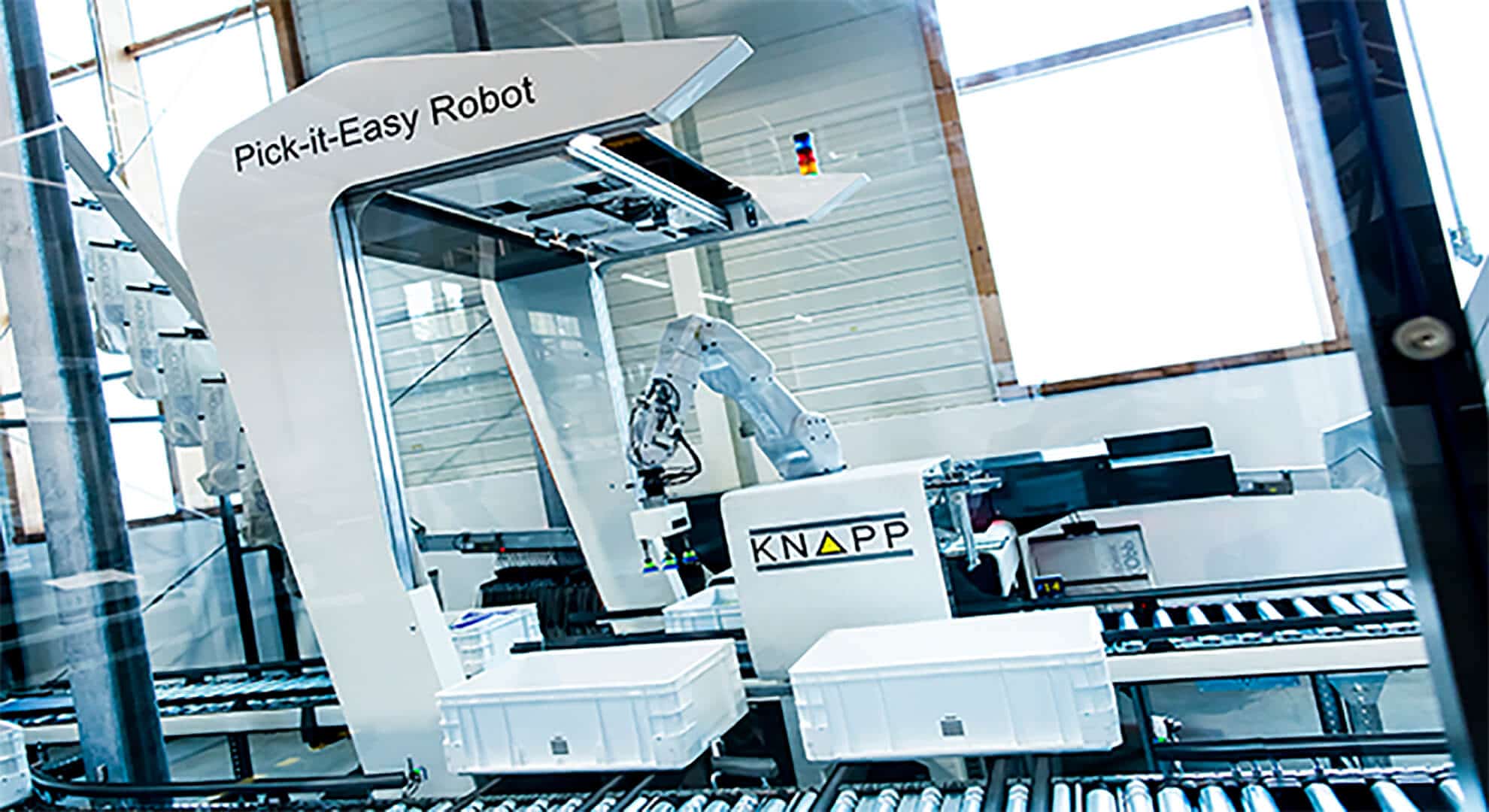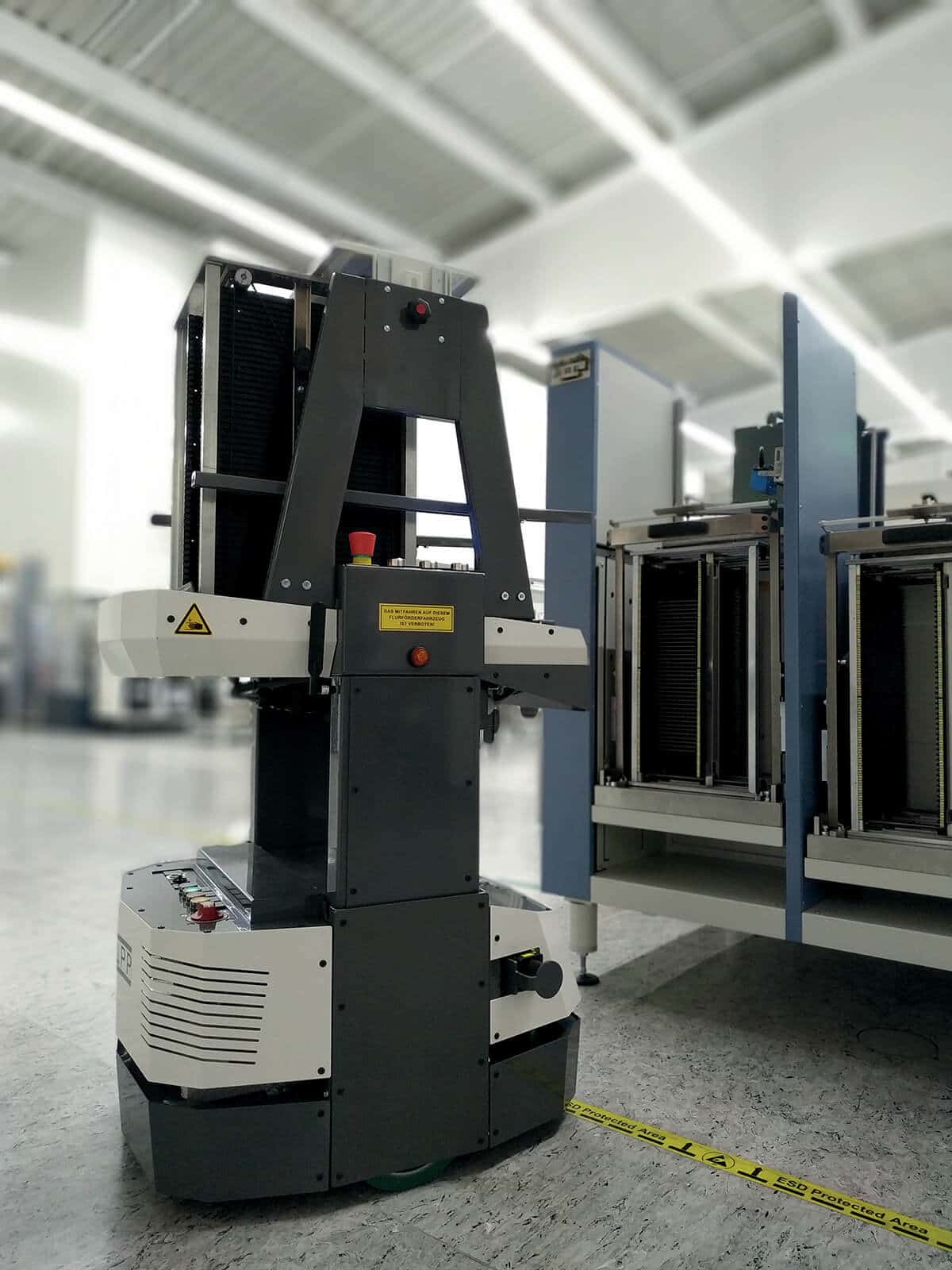In our everyday life, we are constantly coming into contact with digitalization and digital technologies. They are an ever-present part of our lives, surrounding us with an invisible network. But what does digitalization mean for logistics processes?
Digitalization makes technologies intelligent
When it comes to digitalization, the logistics sector is clearly a trendsetter. In the logistics sector, its effects are felt on all levels, and it is opening up completely new opportunities. Innovative technologies are allowing many processes to be fully automated. At KNAPP, digitalization is more than just a buzzword. Instead, it is a central part of the company’s logistics concepts. The key element is the software, which connects all the areas in a warehouse and makes it possible to get the right information and goods to the right place at the right time. It is the control centre, a type of “mastermind” without which nothing would work. More importantly, it gives life and intelligence to the technologies. With the help of artificial intelligence, computer systems can carry out tasks that normally only humans could do, which is how machines come to learn and think – just like humans.
With competence and know-how in digitalization and automation, KNAPP is continually advancing their digital technologies. The central themes are artificial intelligence, machine learning and deep learning.
Innovative solutions thanks to machine learning
For robotic solutions in particular, digitalization and the connection between software and technology are indispensable. The KNAPP specialists in the Robotics & Machine Learning department are constantly finding ways to increase the intelligence of the technologies. Machine learning methods are mathematical techniques that enable machines to learn based on experience. Furthermore, they have the ability to generate knowledge and apply it to reality. Special programming is not necessary. More and more complex decisions can be made automatically, and a vast amount of data can be interconnected.
“Our strength is our multi-faceted know-how in logistics. This knowledge, in combination with the latest approaches in machine learning, allows us to create exciting solutions that are both flexible and robust. The goal is to design our solutions with their evolution in mind so that they can keep developing with the requirements of our customers,” says Johannes Bannhofer, Senior Software, Engineer Machine Learning, KNAPP AG.

Pick-it-Easy Robot: The intelligent, self-learning robot
One example of machine learning in practice is the Pick-it-Easy Robot. Algorithms are determined for identifying and classifying articles. Based on this, the robot selects a suitable gripper as well as the grip point. The robot determines the optimal speed for picking in the same way. The fully automatic robot detects errors automatically and can handle the error independently. For the further development of the robustness and intelligence of the Pick-it-Easy Robot, specialists in Robotics & Machine Learning at KNAPP are working closely with international research institutes and companies in Silicon Valley.

Machine learning in warehouse management
Another solution based on artificial intelligence is redPILOT. This is a software designed to make a logistics company run smoothly. All resources are taken into account, including ever-changing demands and many other influencing factors. Based on the data generated in every operating hour, the software develops further. On the basis of machine learning, these experiences are used for operation planning and for optimizing the online business in terms of bottlenecks.
Basically, redPILOT functions just like a satnav: It starts with forward planning, defining not only the destination but also the best route. Afterwards, continual improvements and further developments are made during real-time operation. The warehouse manager is then given suggestions as to how to best use the available resources. They can therefore create the best possible operation plans and make adaptations as conditions change.
Deep learning as part of machine learning
As a subcategory of machine learning, deep learning is well-suited to applications involving large data stocks, from which patterns and models are derived. Functionally, deep learning can be compared with the human brain. ivii, a KNAPP subsidiary, is focussing on this method, which is used for the ivii.smartdesk. The ivii.smartdesk is an innovative work station where manual processes are digitized. Deep learning algorithms help the image processing software ivii.core to make decisions.

Digitalization also plays an important role in warehouse processes:
Software makes storage and picking processes efficient
The highly-dynamic OSR Shuttle™ Evo ist efficient, flexible and scalable which allows KNAPP to provide the right shuttle solution for every customer requirement. Combined with customized software and ergonomic work stations, they are seamlessly integrated into an overall system. Up to 100 shuttles in a rack line system are busy storing and retrieving goods. The shuttles supply the goods to work stations, where the orders are assembled and shipped as quickly as possible to the end customer. This system provides efficient storage in minimal space.
Digitalization makes in-house transport flexible
The Open Shuttles are autonomous vehicles that are redefining transport in the warehouse. They are top-notch networkers. This means that within a warehouse, they can flexibly connect work stations to systems. Thanks to their individual and swarm intelligence, they are always there where the work is. Furthermore, they have an innovative navigation technology that allows them to move about unaided without guiding lines or markings. Customized software allows the creation of new routes within minutes. What’s more, thanks to the EasyUse principle, customers can easily reconfigure the Open Shuttles by themselves, and integrating the shuttles into a warehouse requires no new structural measures. Recently, the Open Shuttle received a new add-on: Using a special structure, top-heavy PCB magazines can be quickly and safely transported through a warehouse or production area. This enhanced variant is of particular interest for electronics production.

Digital assistants are now a permanent fixture in the working world of logistics where the workplace is being transformed by interactive experience.
Smart glasses as digital assistants
Digital assistants have become simply indispensable in logistics, and KNAPP has been working on this type of application for more than 15 years. The end customer wants the maximum customization and quality as well as the fastest availability and convenience. This is where the digital assistant comes into play, supporting the worker in the warehouse. The employee interacts with these technologies in a natural way. The smart glasses leave the employee’s hands free and show them both the article and the quantity to pick. This streamlines the picking process so the requirements of the end customer can be met.
Virtual computer simulation of a warehouse
With Pick-it-Easy Virtual, the customer can obtain information on intralogistics solutions as well as configure them. This solution creates a virtual depiction of how a warehouse will appear in the future. The customer then has the chance to make changes or to provide training even before his logistics solution starts operation. In this virtual world, even real picking is possible. The customer experiences the processes exactly how they will run in their warehouse later on.
In the digital age, not only are the technologies and intralogistics solutions changing, but also the role of workers in the warehouse.
Human and machine as team
Even as machines and processes are becoming more intelligent, humans still play a central role and will continue to do so in the future. The human becomes the smart worker, responsible for complex programming, servicing and repairs. Strenuous and monotonous tasks are carried out by the machine. Humans and technologies are anything but competitors. Instead, they form a balanced team, complementing each other to perfection. For example, a robot is always available and never tires. However, machines are not able to carry out complex gripping actions as well as humans, who have the ability to respond extremely quickly to new requirements.
Event tip: Would you like to talk to specialists from KNAPP about current and future topics in digitalization? Take the opportunity and come to this year’s Leoben Logistics Summer, where KNAPP will present their latest digital technologies. This year’s topic is “digital minds” and the event will take place on September 26 and 27, at the Montanuniversität in Leoben. Find out more at www.logistik-sommer.at.
Further reading recommendations

The rapid progress in robotics and information technology is constantly pushing the boundaries of technology. As Product Manager for robot systems, Markus Posch promotes strategic innovations in the areas robotics and machine learning. In the following interview, he illuminates on the opportunities and challenges that robotics and artificial intelligence hold for logistics in particular.

Invisible. Essential. Underestimated. Software. Software – it’s invisible, essential and yet all too often completely underestimated. Though we are mostly unaware of it, software accompanies…

Machine learning is everywhere. But what exactly lies behind this future technology? Is it really possible to teach machines to learn? What advantages does it offer– and where does KNAPP come into play? Let’s take a closer look.
Additional Information
For more information, please contact us at sales@knapp.com.
